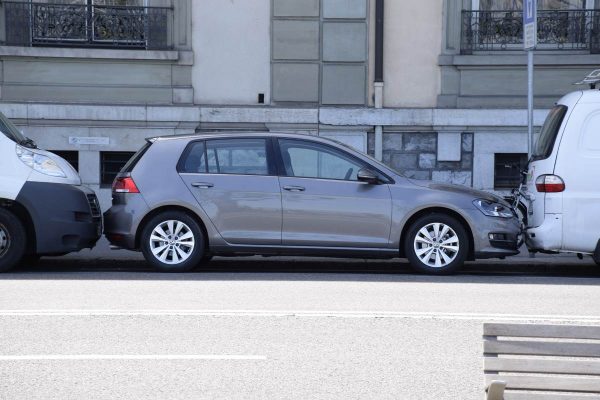Most of us have had a minor scrape in a car park, whether it’s our own fault or someone else’s. Here are some solid strategies and techniques you can use to keep your paintwork pristine:
Parallel parking

Avoid parking closely to a vehicle behind you when parallel parking otherwise you might get blocked in by an inconsiderate parker in front of you. If possible, choose the first or last in the row so that you can make an easy exit – you’ll always be able to move either forwards or backwards. Avoid car parks that are right behind loading zones because people taking long items out of vans can accidentally damage your bonnet. Use reflections in shop windows to see how close you are to the cars in front of and behind you when you are manoeuvring.
General parking
In supermarket and multi-storey car parks, park on the end of a row and leave as much gap as possible to the car next to you. Avoid parking next to a car that’s parked across the line as they’ll have less room to get back in their car. If you reverse into the car park then you can often position your driver’s door next to the driver’s door of the adjacent car and you can leave more room. If you close the gap tight enough to the passenger door of the car next to you it will force them to back out before a passenger gets in rather than risking hitting their door against your paintwork.
Avoid parking next to pedestrian thoroughfares at shopping centres as the pedestrians are often wheeling trolleys or carrying bags which can scratch your car. Avoid parking next to the trolley bay, too. The same applies at beaches where people will be carrying surfboards and all kinds of things laden with abrasive sand.
If you have a tight garage, hang something from the ceiling that touches your windscreen when you’ve driven in far enough.
If you are parking in daylight but will be returning at night, do the most difficult manoeuvre first as it will be easiest; often this means reversing into the car park so that you can drive out forwards.
If you are parking in an unfamiliar place, walk around your car on the way back to remind yourself of the hazards.
If you drive a large or tall vehicle, e.g. a Land Rover, know the height of it so you don’t scrape the roof in multi-storey car parks.
Weather
If it’s really windy, bear in mind that the wind can catch the car doors of people next to your, blowing the door into your paintwork.
Windows
Don’t leave valuables in plain sight in your car otherwise you might come back to find your window broken. Don’t leave a dog in your car on a hot day otherwise police might break the window to rescue it.
Wind your window down a bit when moving because it helps you hear other traffic. You could wind it down all the way if looking out of it helps.
Wing mirrors
Angle your door mirrors in if possible; some cars do this automatically. This avoids pedestrians bumping them if they walk between your car and the one next to you.
Make sure your mirrors are set correctly.
Children and pets
Cul-de-sacs are the worst for kids playing soccer in the street. If a property you are visiting has children and large dogs, parking on the street is sometimes safer; we’ve seen a Great Dane’s wagging tail put a small dent in a car’s fender!
Road surface
Beware of soft verges, particularly if you have a vehicle with a high centre of gravity as the wheels can sink and then the vehicle will tip.
